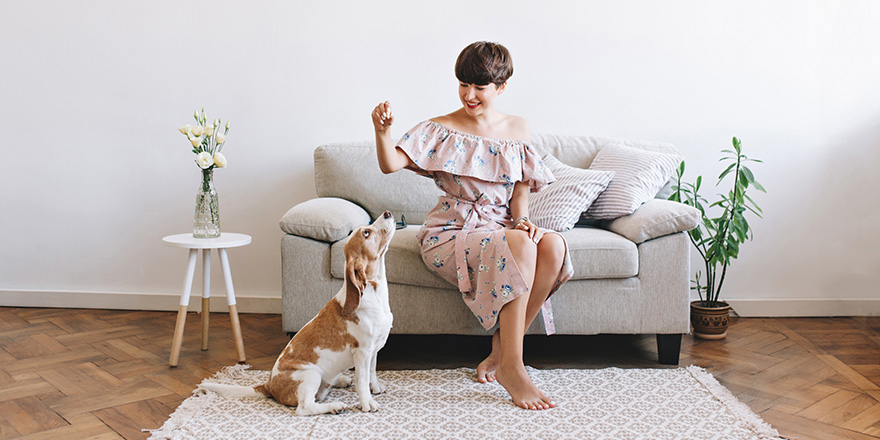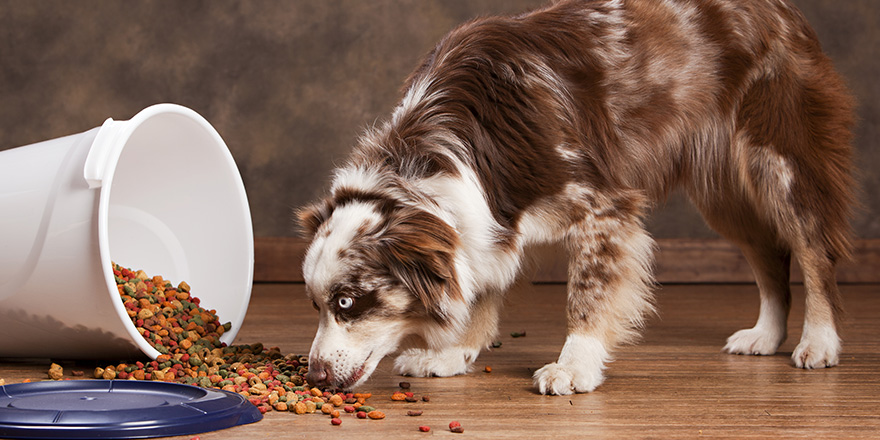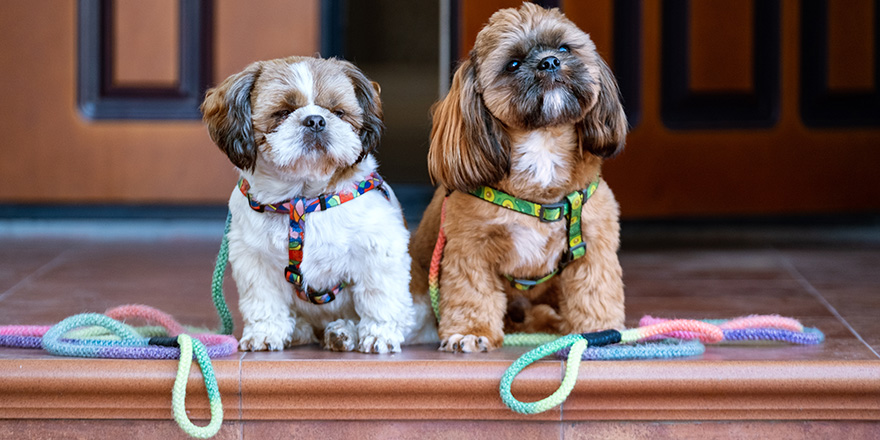Housetraining a puppy isn’t an easy task and dog owners often find that they have their hands full trying to get their pup to go outside instead of leaving gifts on the living room floor. If you’ve just found yourself with a brand new puppy and are unsure how to get the ball rolling, allow our helpful and informative guide to assist you in house training your new best friend.
This guide will also provide owners with help training an adult dog. Sadly, a lot of pups find themselves in a rescue center if they haven’t picked up potty training quick enough and as a result, they may not fully understand house training when they mature. Similarly, rescue dogs may have anxiety and will need a bit of help training in their new home to understand where everything is.
When Should I Start Potty Training my Puppy?
First of all, it’s important to understand when the best time is to start getting your puppy house trained. Puppy owners should always start early to make sure that the lesson sticks however there is such a thing as too early. When they are especially young, they will not only be unable to hold their bladder but also too young to comprehend what you’re trying to teach them.
The ideal time to start potty training a young puppy is between 12 – 15 weeks (3/4 months). At this age, training will absorb better and they will be able to hold their bladder a little longer.
How Often Do Puppies Pee?
Since their bladders are small, puppies will need to pee more than you may expect. A puppy will need to urinate at least every hour or two and almost immediately after eating and drinking. This is why it’s important to create a frequent schedule in the early stages of potty training.
How Long Can Puppies Hold Their Pee?
Generally, a good estimated rule to follow is based on the pup’s age. A puppy should be able to hold its bladder for a number of hours equal to its age in months. For example, a three-month-old should be able to hold their pee for three hours and a five-month-old should be able to hold it for five hours and so on until they reach about nine months. However, it’s important to remember that though this is a good guideline, as they get older they shouldn’t be expected to hold it for a long time even when fully potty trained.

How To Potty Train A Dog – Before You Start
The house training process can seem difficult if you’ve not done it before but these initial steps will make a big difference. It will also be beneficial to read our additional advice and information as we also detail helpful methods and tools you can incorporate into their training.
Patience
For those who are new to puppy potty training, the first thing to understand is the importance of patience. The beginning stages will rely on trial and error and, as your puppy learns, there will be a lot of mistakes that will have you on your hands and knees scrubbing the floor.
Note: Although you can toilet train a dog at any age remember that a puppy will learn a lot quicker than an adult dog.
Make a Schedule
Creating a schedule will help you keep track of potty breaks depending on your puppy’s age, breed size, meals times, as well as their activity levels. This will mean more frequent trips to their potty area however a timetable is key when toilet training. Keep in mind that this schedule will change as your pup reaches maturity as the training will absorb into their behavior and their body will grow to be able to hold their bladder.
This schedule should not only contain each estimated potty break but should also include their walking and feeding schedule. If you decide to crate train your puppy, you may also want to allocate specific times for them to spend in there. Generally, you will need to allow young puppies potty breaks:
- First thing in the morning
- After mealtimes
- After drinking
- After crate time
- After waking up from naps
- After playtimes
- Before going to bed at night
To help keep to a consistent schedule you may want to write one up or print it so you will be less likely to find accidents. These breaks should happen at the same time every day. Some dog owners have used a whiteboard to be able to tick off potty breaks as they go.
Review and Record Accidents
Unfortunately, accidents will happen during the learning process. By taking note of accidents, you may be able to adjust training to avoid this in the future. For example, if your puppy has accidents not long after their potty time, you may need to extend the time allowed in their potty area. You may also learn of any patterns behind your dogs’ accidents so you may adjust their schedule accordingly.
How to Train a Dog to Pee Outside
On average it should take your puppy between 4 – 6 months to be trained. So you may be wondering what specific steps you must follow to make sure you are left with a fully house-trained puppy. Below we have detailed the training techniques necessary to help you potty train a puppy:
First: Take your puppy out to a potty spot of your choosing. Make sure you have your puppy on a leash regardless of whether they are simply going in the garden or not as you will be able to teach them where to go and what areas are off-limits.
Note: Observe your dog. By monitoring your puppy you will also be able to tell once they’ve done their business and you can reward them. Also, some dogs are easily distracted and if you allow them to do as they please you will prolong the potty training process as they won’t immediately understand the purpose of initially going outside. Therefore it’s extremely important that you keep them focused!
Secondly: Allow enough time so that your puppy eliminates everything. If you bring them in too early, you could find an accident only a few minutes later.
Next: Praise them! It’s always vital to reward your dog with treats or verbal praise as this will instill good behavior and good habits.
Next: When potty training a puppy it’s important to let them off the leash after they’ve relieved themself. If your outdoor area allows it let them explore a little so they don’t always associate the outdoors with going potty and that they can have fun out there too.
Repeat: Be strict in your training regime as the repetition will allow lessons to sink in sooner.

Important Information and Potty Training Advice
Understand Your Puppy’s Body Language Queues
Most dogs are able to tell you they need to pee by pawing at the door or by giving other cues. As your puppy grows and learns, they too will develop a clear signal, however, when they’re young you will have to observe them at all times. By watching them you will be able to identify indicators that they need to go potty. Some of these signals may be:
- Walking in circles
- Restlessness
- Sniffing
- Whining
- Tail tucked and rear end slightly dipped
- Many puppies may also sit by doors or frequently approach and/or stare at you.
Use Positive Reinforcement
Puppies and Dogs will naturally want to please their owners so when you reward them for successfully using their potty area, they will make the connection and get into the habit. Using treats, verbal praise or a favorite training toy as a reward will enforce that they did something good.
Unfortunately, not all puppies are ready and willing to learn. Some breeds are notoriously stubborn which can make training a little more stressful. With this in mind, it’s vital to keep your cool and stick to your training schedule. Typically, stubborn breeds will show more resistance and disobedience if you scold them so it’s important to remember to use positive reinforcement when they do something successfully.
If you’re house training an older dog, such as a rescue, this method is just as important as positive reinforcement will help them bond with and trust you sooner.
House Training Note:
A lot of sources will say that rubbing your puppy’s nose in their accidents will discipline them however this will only confuse and scare your dog. Rubbing your dog’s nose in poop or pee should never be done and will not help you to build a healthy relationship.
Choose Their Puppy Food Carefully
Potty training a puppy is significantly easier when you’re confident that the food you provide them is safe and healthy. Make sure that the diet they are on is made up of high-quality ingredients suitable for your dog’s age range and breed.
Consider Crate Training
Crate training is beneficial for a number of reasons. Along with providing a safe space for dogs with anxiety, it can also aid potty training as it will help your puppy learn to hold their bladder.
As dogs are considered den animals, having a safe living space to call their own will provide them with security. The familiarity of a crate will also mean they are less likely to become agitated if a crate is needed to transport them on vet visits.
Crate training is effective because your dog won’t want to urinate or defecate in an area that’s close to where he sleeps or eats so they are more likely to hold it in. Instead, they will try to get your attention to let you know when they need a potty break. However, it’s worth noting that if the crate you buy is considerably large, they will be content with relieving themselves in one corner and sleeping in the other. The more room they have, the more likely it is that your dog will utilize the space needlessly.
When looking for a crate you will need to consider the size of your dog or puppy and how much they are likely to grow. Your canine friend will need enough room to lie down, stand, and turn around without a lot of effort. However, you can find crates on the market that adjust accordingly.
Deal With Accidents as Soon as Possible
When your dog has an accident it’s crucial to clean the mess as soon as you can to prevent them from doing it again. Dogs often pee to mark their territory and the lingering odor emitting from a previous accident will likely mean that it will happen again. This will usually occur in the same spot in an attempt to top up the marking.

Useful Tools and Tips to Help Potty Train a Puppy
Potty training a puppy, and even an adult dog, can be made simpler with the tips and tools below especially if you live a busy lifestyle or don’t have frequent access to a yard.
Puppy Pads/Indoor Dog Potty
A lot of owners use pet pee pads in conjunction with dog litter boxes to help toilet train their new pet pup. Some use them for an adult dog who doesn’t have great bladder control or maybe needs to be re-potty trained. An indoor potty is also a good tool to consider if you live in an apartment complex.
Note: A lot of sources say that potty pads or ‘wee wee pads’ are a great short-term tool. However, most puppies, if allowed to use them for too long, will believe that you’re teaching them to do their business indoors.
If you need help finding reliable pet pee pads, take a look at our buying guide for support and recommendations.
Baby Gates
To eliminate the likelihood of finding accidents across the home you may want to limit the areas that your dog has access to. Installing a baby gate is perfect if you have a big home and it won’t be a permanent fixture. This is because as your dog learns, the more space you can give him access to until you can eventually take the gate down.
Hire a Dog Walker
Sometimes it’s impossible for you to leave work to be able to stick to your puppy’s feeding schedule and potty breaks. Others may not have other household members to rely on either so you may find the hiring of a dog walker incredibly helpful.
Communication in the Household
Having others in the household stick to and assist with a schedule will make the process run smoothly. If you have older children, understanding how to toilet train a puppy and why you should train them will even help to educate them about looking after a pet, puppy, or dog.






